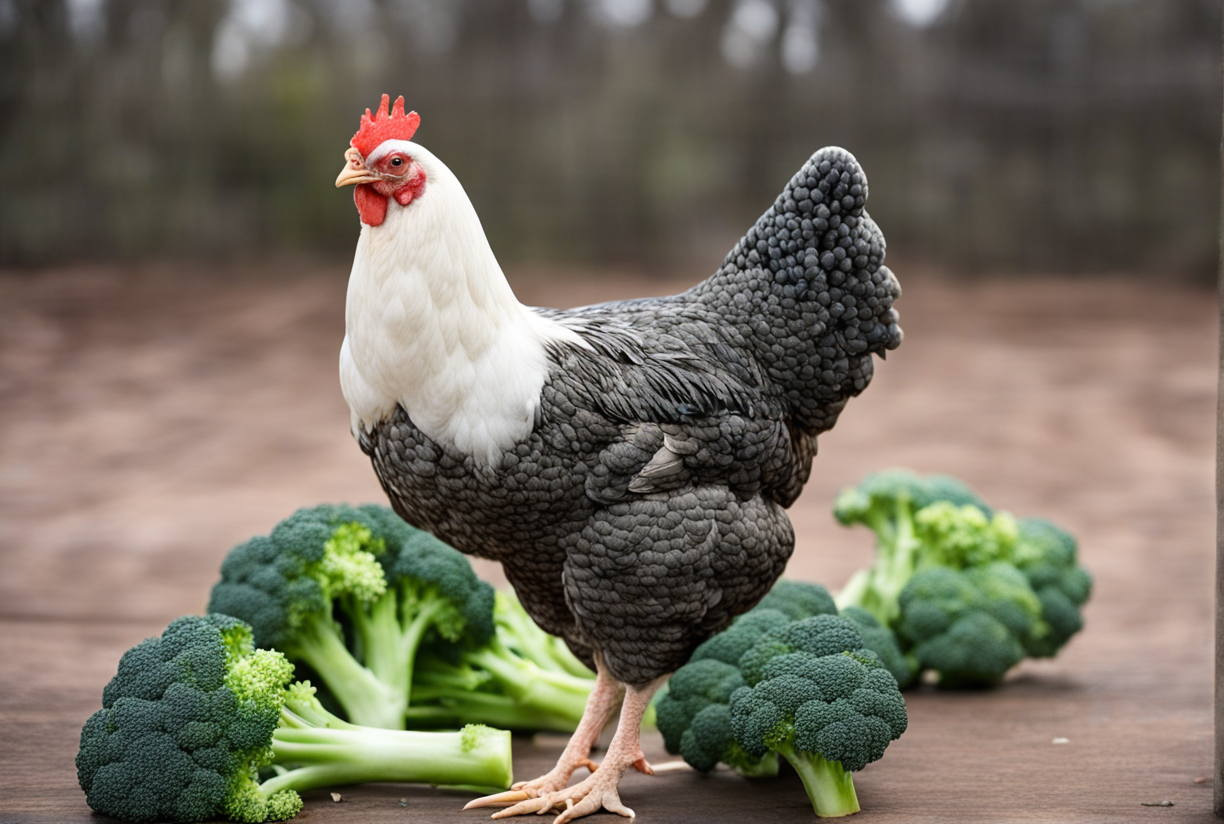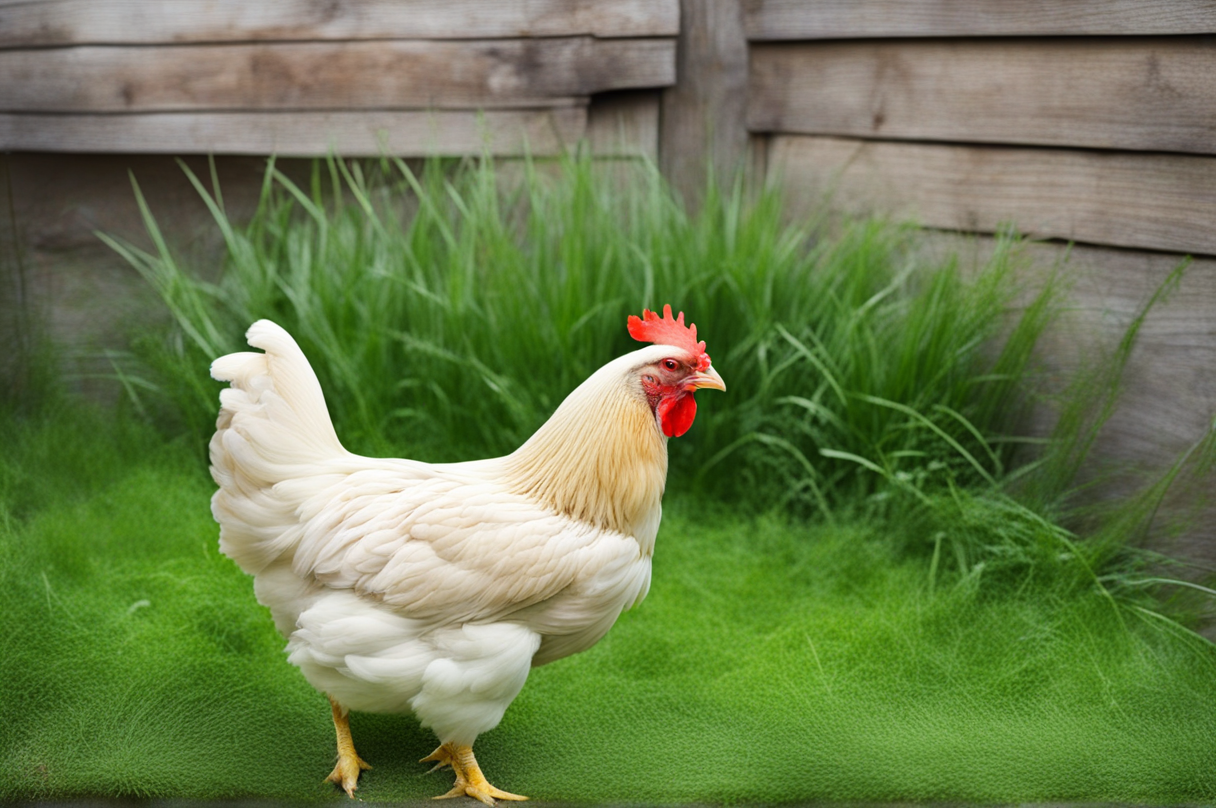When I first got my little flock of 6 Rhode Island Red backyard chickens, I didn’t know much about what to feed them.
Being the health nut that I am, I figured I’d just give them lots of greens from my garden.
Kale, spinach, swiss chard, romaine lettuce – you name it, they got a big pile of it morning and night.
Well, let’s just say that led to some pretty “explosive” and stinky results in the coop if you know what I mean!
Turns out, chickens can definitely eat too many greens, and it will give them nasty diarrhea and tummy troubles.
The key is moderation and variety in their diet.
Chickens need a balanced diet with protein, carbs, vitamins, and minerals to stay healthy and productive.
See, chickens don’t actually eat greens in the wild.
Their natural diet consists of seeds, grains, bugs, and the occasional bit of grass or weeds.
So their digestive systems aren’t designed to handle large daily amounts of nutrient-dense, water-rich leafy greens.
I was giving each of my chickens the equivalent of like 2-3 salads worth of greens each day! Now I still give my girls greens every day, but just a handful per chicken.
I mix it up with grains, vegetable scraps, worms, yogurt, and high-protein treats. Their poops are way more solid now and their egg laying has increased!
Table of Contents
How Much Greens Can Chickens Eat?
When it comes to green, leafy veggies, about 1-2 handfuls per adult chicken per day, or around 1 cup total, is plenty.

This depends on the size of your chicken too – smaller bantam chickens should get less.
For chicks under 12 weeks old, just give a few bites of greens at a time. Too much will upset their sensitive digestive systems.
Any more greens than the recommended 1-2 handfuls per adult chicken and you risk digestive upset, nutrient deficiencies, and diarrhea.
Some signs of too many greens are smelly, watery poops, lack of appetite, low energy, drop in egg production.
Best Greens for Chickens
Not all greens are created equal when it comes to nutritional value for chickens.

Here are some of the top nutritious choices:
- Kale – extremely high in vitamins A, C, K as well as antioxidants. Chickens love curly kale!
- Spinach – great source of niacin, zinc, protein, iron, and vitamins A, C, E, K
- Swiss Chard – packed with vitamins K, A, C, magnesium, potassium, iron, and fiber
- Romaine Lettuce – provides high levels of vitamin A for immune system health
- Arugula – antioxidants, vitamin K, and smaller amounts of vitamins A and C
- Broccoli – high in vitamin C, K, and calcium. Great for bone health.
Greens to Avoid or Limit for Chickens
There are some greens that can be harmful for chickens if fed too often:

- Iceberg Lettuce – very little nutritional value and high water content can cause diarrhea
- Rhubarb Leaves – contain high levels of oxalates that are toxic to chickens
- Raw Potato Greens – contain solanine, chaconine, other glycoalkaloids toxic to chickens
- Nightshade Veggies (tomatoes, peppers, eggplant) – leaves and stems contain toxins
- Uncooked Beans or Peas – contain hemagglutinin lectin, a toxin
Safe to feed in moderation (1-2x a week):
- Beet Greens – high in oxalates
- Chard – high in oxalates
- Spinach – high in oxalates
Mix It Up for a Healthy, Productive Flock
For the healthiest and most productive backyard flock, mix up their greens with other tasty, nutrient-dense treats like:
- Chopped veggies – squash, carrots, sweet potatoes, peas, parsnips
- Whole grains and rice – provides carbs for energy
- Sprouted seeds – excellent source of vitamins and protein
- Mealworms and crickets – high in protein for growth and egg production
- Plain yogurt – provides probiotics for gut health
- Scrambled eggs – great source of protein and cholesterol for hens
- Fruit scraps – berries, melons, bananas, apples, citrus
- Herbs – parsley, basil, mint stimulate appetite and provide nutrients
- Granite grit – helps them grind and digest food in gizzard
Follow these tips on feeding greens and you’ll have a healthy, productive flock! Their egg production will be consistently high if you provide balanced nutrition without excess greens.
Trust me, when it comes to chicken keeping, happy bellies mean happy, thriving chickens!
Best Ways to Prepare Greens for Chickens
There are a few tricks to prepare leafy greens so they are safe and appetizing for chickens:
- Chop finely – Cut greens into tiny pieces to make them easier to eat. Whole leaves can be difficult for chickens.
- Blanch or wilt – Quickly boiling or microwaving greens until just wilted makes them easier to digest.
- Mix with other foods – Mix small amounts of greens into grain mixes, mashes, or scraps. This prevents selective grazing on just greens.
- Provide free-choice – Hang a bunch of greens in the run so chickens can free-range graze. This prevents gorging.
- Offer in moderation – Only provide 1-2 handfuls per chicken daily. Too much can lead to diarrhea.
Try offering chopped greens in the morning when their crops are empty.
I like to blend up a mix of oats, yogurt, greens, seeds, and berries for a nutritious chicken smoothie! You can also mix wilted greens into a warm mash along with grains and scrambled eggs for a complete meal.
Always introduce new greens slowly and in small amounts to allow their digestive systems to adjust. Keep an eye out for cases of diarrhea, which likely signals they’ve had too much of a particular green.
Can Too Many Greens Cause Nutrient Deficiencies?
Even though leafy greens are packed with vitamins and minerals, feeding chickens too many greens can actually lead to nutrient deficiencies if not balanced with other foods.
Here’s why:
- Greens are low in calories – Chickens need energy from carbs and protein.
- Greens lack key nutrients – Certain vitamins and minerals like B12 may be missing.
- Some nutrients poorly absorbed – The calcium in greens is less bioavailable due to oxalates.
- Nutrient imbalances – Excessive greens can create imbalances, interfering with nutrient absorption.
Just because chickens are getting large amounts of vitamins A, C, and K from greens doesn’t mean they are absorbing enough other critical nutrients like protein, calcium, phosphorus, magnesium, copper, and zinc needed for growth, egg production, and immunity.
A diet of mostly greens can also lead to vitamin B2 deficiency, causing poor feathering.
Greens are also extremely low in vitamin D, which is crucial for calcium absorption. Always provide free-choice oyster shell calcium supplement.
That’s why it’s so important to feed greens as only one component of a varied, balanced diet.
Shoot for 1-10% of their daily diet from leafy greens, with the rest coming from grains, proteins, fruits, and calcium sources.
Signs of Nutrient Deficiency in Chickens
Watch for these signs that your flock may not be getting proper nutrition if you’ve been feeding excess greens:
- Decreased egg production
- Soft or thin eggshells
- Slower growth in chicks
- Loss of appetite
- Lethargy
- Diarrhea
- Poor feathering
- Pale combs and wattles
- Weak immunity
Correct the diet by reducing greens and increasing protein sources, whole grains, calcium-phosphorus supplements, and full spectrum vitamins and minerals. Providing good layer feed is an easy way to cover all nutritional bases.
Also make sure chickens always have access to clean water and insoluble granite grit. Consult a vet if deficiency symptoms persist.
Balancing Greens with Other Nutritious Foods
Here are some easy ways to balance out excess greens and provide a nutritionally complete diet:
- Commercial layer feed – Provides carbs, protein and balanced nutrition.
- Whole grains – Oats, wheat, sorghum, barley, rice, etc for energy.
- Protein sources – Mealworms, peas, beans, eggs, seeds, nuts, dairy.
- Calcium supplements – Oyster shell, bone meal for egg strength.
- Free choice grit – Supports food and calcium absorption.
- Variety! – Mix it up with fruits, sprouts, veggies, herbs and more.
Try scattering a handful of mixed bird seed or flock raiser feed to encourage pecking and get their protein levels up. You can also offer berries, chopped veggies, rice, beans, nuts, and seeds.
Give treats like mealworms, yogurt, cheese, eggs, or fish food as high protein supplements 2-3 times a week. Providing a nutritionally balanced layer feed takes the guesswork out of getting nutrients right!
Your Questions Answered:
Let’s wrap up with some common questions from readers like you about feeding greens to backyard chickens!
Can chickens eat collard greens?
Yes, collards are safe and nutritious for chickens in moderation. They are high in vitamins A, C, K and antioxidants. Chop the leaves and stems finely before feeding.
What about beet or turnip greens?
Beet and turnip greens are safe but high in oxalates, so feed just 1-2 times per week and balance with other foods.
Can I give my chickens grass clippings from the yard?
Yes, fresh grass clippings provide vitamins, minerals, and fiber. Just be sure the grass has not been treated with any herbicide or other chemicals.
